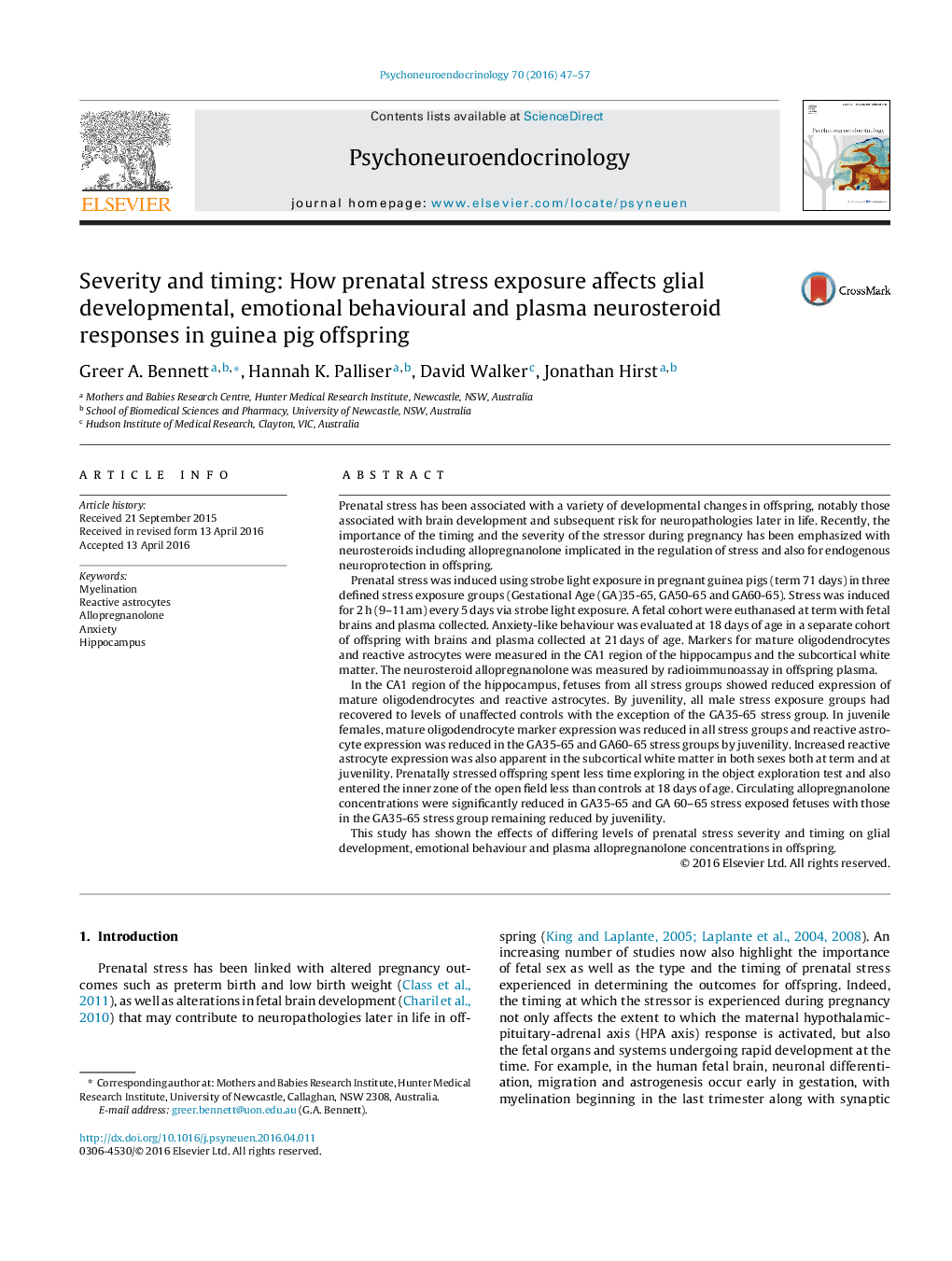| Article ID | Journal | Published Year | Pages | File Type |
|---|---|---|---|---|
| 337220 | Psychoneuroendocrinology | 2016 | 11 Pages |
•Prenatal stress in beginning from GA35, 50 and 60 (term GA69) disrupted brain development.•Prenatal stress in beginning from GA35, 50 and 60 (term GA69) increased anxiety.•Plasma allopregnanolone concentration significantly decreased in the GA35-65 stress group.
Prenatal stress has been associated with a variety of developmental changes in offspring, notably those associated with brain development and subsequent risk for neuropathologies later in life. Recently, the importance of the timing and the severity of the stressor during pregnancy has been emphasized with neurosteroids including allopregnanolone implicated in the regulation of stress and also for endogenous neuroprotection in offspring.Prenatal stress was induced using strobe light exposure in pregnant guinea pigs (term 71 days) in three defined stress exposure groups (Gestational Age (GA)35-65, GA50-65 and GA60-65). Stress was induced for 2 h (9–11am) every 5 days via strobe light exposure. A fetal cohort were euthanased at term with fetal brains and plasma collected. Anxiety-like behaviour was evaluated at 18 days of age in a separate cohort of offspring with brains and plasma collected at 21 days of age. Markers for mature oligodendrocytes and reactive astrocytes were measured in the CA1 region of the hippocampus and the subcortical white matter. The neurosteroid allopregnanolone was measured by radioimmunoassay in offspring plasma.In the CA1 region of the hippocampus, fetuses from all stress groups showed reduced expression of mature oligodendrocytes and reactive astrocytes. By juvenility, all male stress exposure groups had recovered to levels of unaffected controls with the exception of the GA35-65 stress group. In juvenile females, mature oligodendrocyte marker expression was reduced in all stress groups and reactive astrocyte expression was reduced in the GA35-65 and GA60-65 stress groups by juvenility. Increased reactive astrocyte expression was also apparent in the subcortical white matter in both sexes both at term and at juvenility. Prenatally stressed offspring spent less time exploring in the object exploration test and also entered the inner zone of the open field less than controls at 18 days of age. Circulating allopregnanolone concentrations were significantly reduced in GA35-65 and GA 60–65 stress exposed fetuses with those in the GA35-65 stress group remaining reduced by juvenility.This study has shown the effects of differing levels of prenatal stress severity and timing on glial development, emotional behaviour and plasma allopregnanolone concentrations in offspring.
